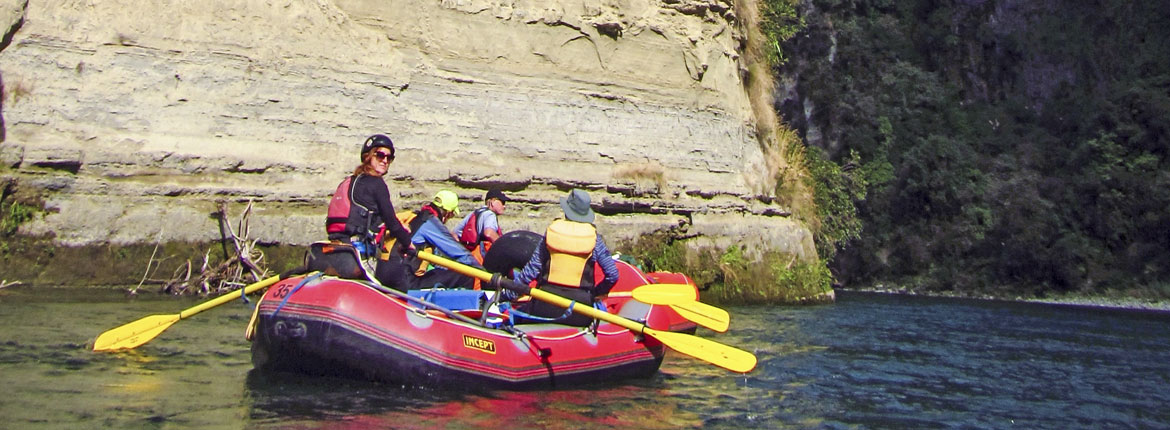Driving to River Valley Lodge through the landscape south of Taupo, it was easy to be captivated by the sights of the Desert Road and the rugged hills east of Waiouru.
I didn't give much thought to the deep chasms which criss-cross the region. Less than a day later, when I was staring up from the bottom of one, it felt as though I'd entered a whole new world, hidden in the cracks of the New Zealand I knew.
After staying the night in a cabin at River Valley Lodge, nestled deep in the canyon that borders the Rangitikei River, I joined my rafting group and set off downriver, splitting four travellers and two guides between a pair of rafts and an inflatable kayak.
Within minutes of setting off from the lodge almost all signs of humanity vanished, leaving just those of birdlife and running water. None of us was experienced in rafting and though we travelled close to 20km a day, the brisk current took care of most of the work, with our guides handling the steering. We were left to simply take in our surroundings.
We'd floated into a new world of almost surreal natural beauty, full of jumping trout, wild geese, and vibrant native bush bordered by towering cliff walls. Water trickled in small waterfalls from the cliffs into the river, which was crystal-clear and pure enough to be drinkable for much of the journey. I could see why Peter Jackson had decided to film parts of The Lord of the Rings films there; it has an unforced sense of grandeur. 
Each day we would stop for a brief tramp to see nearby waterfalls and enjoy packed lunches. It was nice to stretch my legs and some of the scenes the guides took us to were incredible; anywhere else they would be a tourist attraction in their own right, but we were the only ones there since many parts of the Rangitikei River are only really accessible by water.
In the afternoons, we would pull up the rafts, set up our tents and then spend the rest of the daylight hours swimming, sunbathing, enjoying a beer or just taking in the sights while our guides cooked up a delicious dinner made with locally grown ingredients (including some stunningly good lamb) from the chiller box.
As night fell, the shadows of the canyon deepened and we'd sit around the campfire talking before retiring to our tents. The only sounds would be distant calls of morepork and the ever-present, but never-intrusive, babble of the river.
I had worried before starting that three days of rafting and camping might grow boring, but every few minutes we would pull our gazes down from the world around us to navigate sets of choppy rapids. It had the curious effect of drawing me from the modern world of minutes and hours into a kind of 'perpetual now' where my mind was always in the moment.
"It's the perfect mix of excitement and relaxation," one of our guides, Doug said, as we floated down a calm section of the river. He called it river time.
It was a way of travelling that was utterly in rhythm with the natural world, where we'd move with the current, stop for lunch when we got hungry, make camp when the light started to fade, then rise with the dawn. Halfway through the first day the other rafters took their watches off, trusting the world to tell them what needed doing.
The long winding canyon of the Rangitikei is in many ways a monument to time. The canyon walls are scored with sloping lines, a testament to millions of years of sedimentation and the time it has taken for the river to slowly erode through them. In one section a part of the cliff has fallen away to create a cave. Inside, fused into the stone, we could see the bones of some massive creature from deep in the past.
It was humbling to be somewhere so beautiful and pristine, to see its scale and to briefly become a small moving part of it.
Reported by Martin Moore for our Summer 2016 issue




